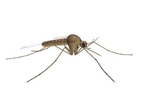
Unlike mosquitoes, which bite and move along quickly, ticks can stay attached to your skin for hours or even weeks at a time. Because they typically gorge themselves on a host's blood, and because their presence can be difficult to detect, they're inclined to stay in a single place for extended periods.
The Feeding Process
Ticks can't jump, but they're excellent climbers and crawlers. After grabbing onto a host—often after lying in wait in tall grass—they find an inconspicuous place to settle in and feed. In humans, this is usually a crevice like an underarm, or the groin; in animals like dogs, it may be a place like an ear or in between toes. In one of these places, ticks cut through the skin's surface and insert a feeding tube through which they suck the host's blood. Some ticks produce a sticky fluid that helps them stay attached to the host while they feed, while others have small hooks that they use to hold themselves in place.
Getting Their Fill
Because ticks gorge themselves so slowly, they may stay in place for a period as short as a few hours or as long as three weeks or so. During this period they drink a host's blood, and may also secrete their own saliva into the host's bloodstream. If a tick is infected with a disease, this transfer of saliva can then infect the host. The length of time that a tick remains with his host depends on both his species and his stage in the life cycle—adolescent ticks, or nymphs, typically drop off after a few hours, whereas adults stay attached for longer.
Finding and Removing
Ticks may be difficult for their hosts to detect, and not just because of their relatively small size. They secrete a natural anesthetic where they feed, preventing the host from feeling them. The longer a tick stays attached to his host, though, the more likely he is to transfer a disease like Lyme—deer ticks, for example, typically don't start transmitting the disease until they've been feeding for at least 36 hours. If you find a tick on your body or on a pet, use a pair of tweezers to grab its body as close to your skin as possible and pluck it straight out, then drop it into a jar of rubbing alcohol to kill it, and save it temporarily in case you need to have it tested for disease.
Signs of a Bite
Because some ticks eat and run instead of staying in place for more than a few hours, you may get a tick bite without ever seeing the culprit. While you may develop an irritated red spot about the size of a dime around a bite, this is typically a simple reaction to the tick's saliva, and will fade within a week or so. If the rash spreads over the next several weeks, though, see a medical professional. If you found the tick responsible, take it to your doctor—or to the vet, if a pet was bitten—so it can be tested for diseases like Lyme, which it may have spread via the bite.
References
Photo Credits
-
Michael Blann/Photodisc/Getty Images
Writer Bio
Tom Ryan is a freelance writer, editor and English tutor. He graduated from the University of Pittsburgh with a degree in English writing, and has also worked as an arts and entertainment reporter with "The Pitt News" and a public relations and advertising copywriter with the Carnegie Library of Pittsburgh.




